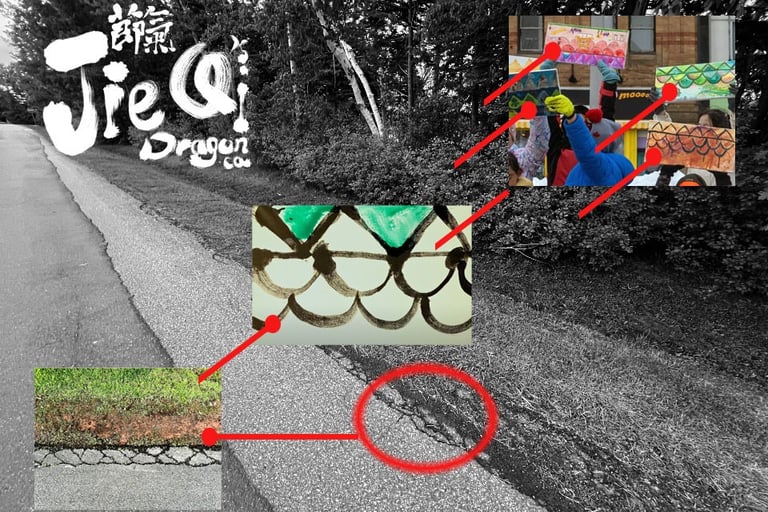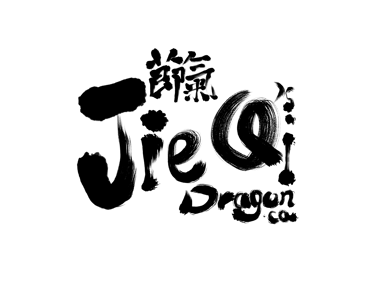The Origin of the Dragon Pattern
“Jie Qi’s Dragon” began as an art and education initiative grounded in the traditional Chinese calendar of 24 solar terms. It was designed to inspire awareness of climate change, environmental shifts, and cultural continuity, using the structure of dragon scales as a visual format to connect seasonal concepts with children’s drawings and multicultural imagination.
We once thought it was a creation. But its core visual structure was, in fact, drawn from something deeper — the unique surface patterns formed along the winter roads of Prince Edward Island, Canada. Shaped by cycles of freezing and thawing, human activity, and plant growth, these natural cracks closely resemble the traditional Chinese motifs of dragon patterns: linked beads, spirals, and the layered rhythms seen in ancient architectural ornamentation.
In this moment of recognition, a dramatic convergence of aesthetics and philosophy occurred:
What we believed we were painting was already being written by the earth.
What we called Jie Qi was always there — a pattern etched by time onto the skin of the land.


